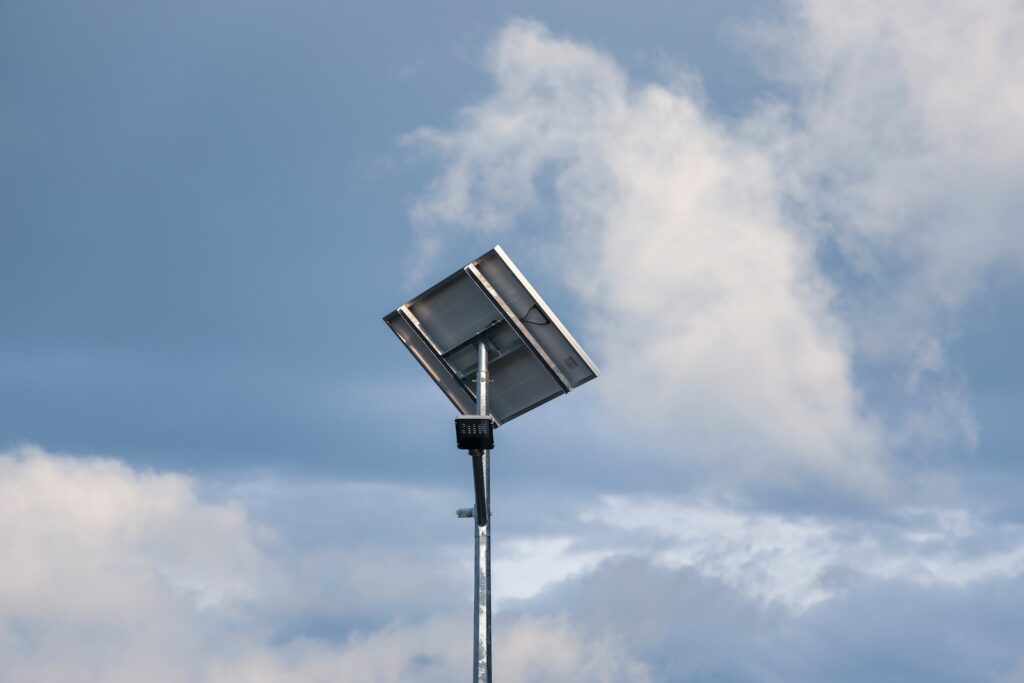Adding a new fixture to your home is exciting, but you want it to maintain the overall aesthetic value of your property. Therefore, you need to choose a cool and shady site to put it in.
It should not be a surprise that solar panels can only generate power effectively if faced straight into the sun.
This concern is not unjustified because the boards need to take in a sufficient amount of sunlight to charge the batteries. However, exposure to direct sunlight is not required and solar lights can work in shades.
Solar-powered lighting can even be charged while in the dark. However, given the lack of specificity associated with the word “shade,” how much exposure to direct sunlight should your solar panels have to operate at their optimum levels?
If you are familiar with how solar panels function, you will be better able to select the location for installing your own.
All right, let’s get started with the batteries. Rechargeable batteries are essential for solar panels to produce energy and then deliver that point to a circuit when required. The addition of a light sensor is a welcome and valuable feature.
It is possible to find it sitting atop the solar lights if one is looking for it. The light will start receiving power from the battery as soon as the sensor detects it is time for nighttime and sends a signal to the battery to that effect.
If there has been uninterrupted illumination for more than 16 hours, this implies that the surfaces of the panels have been appropriately protonated for at least 8 hours.
It is physically impossible for a tree to prevent the sun from entering a room because some light will always pass through the leaves and reflect off the panels.
A cover, much like the roof of a garage, acts as a barrier against entry. Even though we cannot put our finger on exactly what shade is, we can tell that the quantity of shade your solar panel is exposed to will affect your panel’s efficiency.
Since we cannot offer you a definition of “shade,” we suggest you give it a shot and see whether it works.
As long as there is no guarantee that the battery will always be exposed to direct sunlight, a charging cycle that lasts only four hours can supply enough power for at least six to eight additional hours.
Do Solar Lights Require Sun or Just Daylight?
Those who rely on solar electricity face a massive obstacle in the form of intermittent sunlight because the sun does not always shine.
Solar lights keep your house bright under the shades and all night long, even when the sun’s rays aren’t as intense as they usually are. Solar panels, on the other hand, are useless if they are not exposed to sunshine.
According to those knowledgeable in the subject, the optimal setting for it receives a significant amount of sunlight. It is not obscured by dense soil, vegetation, or other sources of large shade. The home can function on solar power for the entire night if the lights are fully charged.
However, the atmosphere is too dense when it is cloudy outside to allow enough sunshine to pass through. At that point, there will be a noticeable acceleration in the light fading away.
Light sensors activate solar-powered lights when it gets dark out because solar energy is generated through the photovoltaic effect, which can only charge an adequate amount of sunshine.
Solar cells can store energy even when the sun’s rays aren’t powerful. On the other hand, you would anticipate that overcast weather would cause your solar lights to run out of power sooner than usual.
Do Solar Chargers Need Direct Sunlight?
DIY solar panel installation can be intimidating, so go gently. The panels should be placed where most visitors need clarification. UV protection prevents them from absorbing UV light. This requires removing shade sources like overgrown vegetation or broken furniture.
Solar chargers can create electricity without direct sunlight. They need a supply of photons, particles, or light bright enough to illuminate your home after the conversion.
Even if you install the panels in a covered region, your solar chargers will charge if there is sunlight. Because photovoltaic systems employ photons from daylight, your solar panels will charge even if the sun isn’t shining brightly.
Cloudy weather reduces its usefulness. Even in the summer, great weather isn’t guaranteed, and in the winter, it’s impossible. Warm nights have plenty of daylight.
Do Solar Lights Work Under Trees Shades?
Solar panels work well under tree shades. Photovoltaic cells can work without sunlight. Photons are only needed at night. The cells convert atmospheric photons into electricity.
Solar-powered lights operate effectively in shaded locations. The shade shouldn’t be overpowering. Solar lights offer the brightest and longest-lasting light, even in areas with little sunlight. Solar panels will only work once fully charged.
This renewable energy source will provide 15–16 hours of power without shadow. When placing solar panels, consider how often surrounding trees shade them. This shows if they’re getting enough radiation.
When enough photons are charged, the lights will endure all night. When trees are too evident, the lights may go out within hours. Trim their branches for more light.
Conclusion
Because solar panels get the ability to generate electricity from the sun’s beams, it stands to reason that you will be without power under the shades and whenever there is cloud cover in the sky.
Even though solar panels produce the most electricity when exposed to intense, unfiltered sunshine, it is still possible for them to do so when clouds are present.
